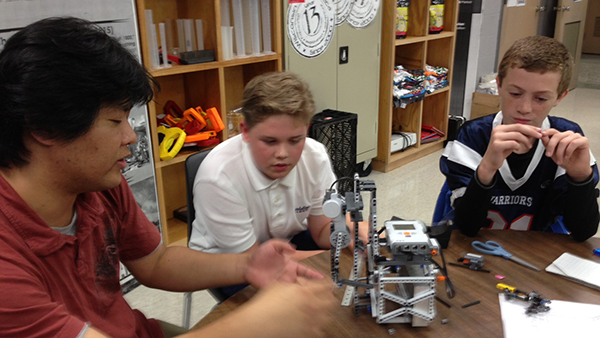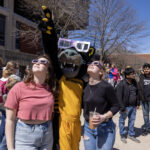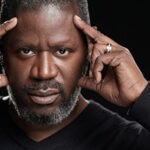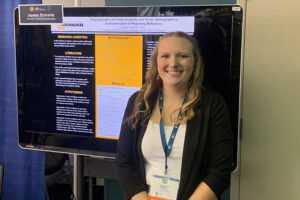 University researchers and a team of middle schoolers are working together to build a hand mobility device for seniors with disabilities.
University researchers and a team of middle schoolers are working together to build a hand mobility device for seniors with disabilities.
The unusual partnership grew from a newspaper article and a phone call.
Peter Graven and his robotics club at Deer Creek Intermediate School in St. Francis were preparing a project for the 2012 First LEGO League (FLL) challenge, an international innovation competition for middle schoolers. The theme that year was Senior Solutions, helping develop devices that address health and mobility issues specific to senior citizens.
FLL introduces younger students to real-world engineering challenges, building LEGO-based robots to complete tasks. FLL teams are guided by their own imagination and adult coaches, according to the US First website. The goal is to help student discover career possibilities and learn to make positive contributions to society.
After reading an article in the Journal Sentinel about research at UWM’s Hand Rehabilitation Lab, Graven contacted Na Jin Seo, the lab’s director and an assistant professor of industrial and manufacturing engineering, for advice on evaluating his students’ efforts.
That initial contact in 2012 has blossomed into an ongoing collaboration between the seventh and eighth graders and university researchers.
Graven is an 8th grade science teacher who started the STEM (Science Technology, Education and Mathematics) program for the St. Francis School District. Deer Creek is located near the St. Ann’s Center for older adults, and students became aware through contacts with the center of the many mobility needs of older adults, says Graven.
One of the focuses of UWM hand rehabilitation lab is developing and testing devices to help stroke survivors regain use of their hands. Seo gravitated toward robotics early on: “I’ve always been interested in how to use engineering to benefit human beings.”
Working across generations with ease
A grant from UWM’s Cultures and Communities program has allowed the intermediate school and the university researchers to continue their collaboration. Pilwon Hur, a post-doctoral researcher in UWM’s engineering program, visits the school to discuss challenges and offer advice. The students also visit the UWM lab regularly to compare what they’ve accomplished with efforts of researchers on campus.
“They have been extremely receptive and welcoming,” says Graven of the UWM researchers. “They’ve been patient with the kids and respect their school schedules.”
Watching Hur study the device and take and answer questions from Deer Creek students Nik and Colton during a visit to the school, there is little sense of an age difference. This day, the students are wrestling with how to build a finger rest that will allow researchers to test skin sensitivity, but still be comfortable for the users. Hur gives thoughtful attention to the students’ ideas as the whole group exchanges ideas and possible solutions. These are curious engineers attacking a problem together.
“These kids are really bright,” says Seo, “and they love to talk about engineering and programming.”
Innovation, sensation are just two goals
Members of the school’s robotics club have moved on to other projects, but a core group has stayed focused on the hand project. The formal program involves 10 Deer Creek students and 11 UWM engineering students. Ultimately both groups of engineers hope to develop an assistive device that improves seniors’ ability to feel the touch sensation in the hand better.
But in addition to building a robotic device, Graven and Seo stress other benefits of the collaborative program:
Showing university students and middle schools students can work together on scientific research to benefit the elderly;
Encouraging university students to develop their teaching and mentoring skills as well as connections with the community;
Inspiring the university and middle school students to develop and use engineering skills to help people in the community.
“It’s allowed us to help students understand the connection between the STEM fields and the real world,” says Graven.






